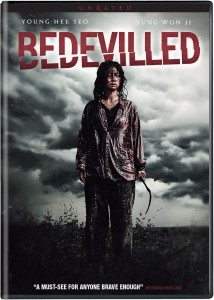Written and directed by Kiyoshi Kurosawa, the film Kairo (2001) follows several different Japanese university students investigating a website linked to a series of suicides. Through its bitter depiction of desolation in its characters, Kairo introduces a saddening issue prominent in today’s society. In Japan particularity, a phenomenon called hikikomori, is defined by an acute social withdrawal from society by adolescents and young adults. As portrayed in Kairo, the victims are shown exhibiting bizarre behaviour, which display the devastating effects of the sociological alienation.

Hikikomori, a Japanese social and health issue.
Hikikomori is often characterized by victims resorting to extreme measures in order to isolate themselves from real-life social interaction. The first example can be spotted near the beginning of the film, after Ryosuke signs up for internet service and accesses a ghost site. In this site we are presented disturbing images/cams of various strangers confining themselves to dark rooms, displaying depressive manners which include walking aimlessly around their rooms, or glaring back at us (or Ryosuke) through the screen. These odd behaviours are also exhibited by multiple characters throughout the film as they become more obsessed with the idea of loneliness and death. Another example is Toshio Yabe after encountering a ghost. He sits alone in dark and often ignores his co-worker’s presence and concerns.

Scene from Kairo.
These weird behaviours convey a sense of helplessness as they feel their obsession with loneliness have placed them far away from any chance of being saved. This can also be illustrated through the video of the man sitting with a bag over his head in front of a wall with “help me” written all over it. As these emotions spiral downwards, the victims eventually resort to suicide (as seen by the deaths of Taguchi and Harue). As put by a plant nursery member after his co-worker’s suicide, “Maybe…he [Taguchi] suddenly just wanted to die. I get that way sometimes. It’s so easy to hang yourself.” This paints the pessimistic mindset of the victims, who reveal having weak ties to their own personal lives.
*Edit 11/15/2015:
Source added: http://psychology.wikia.com/wiki/Hikikomori
*Edit 11/20/2015: several re-arrangements, fixed minor mistakes




